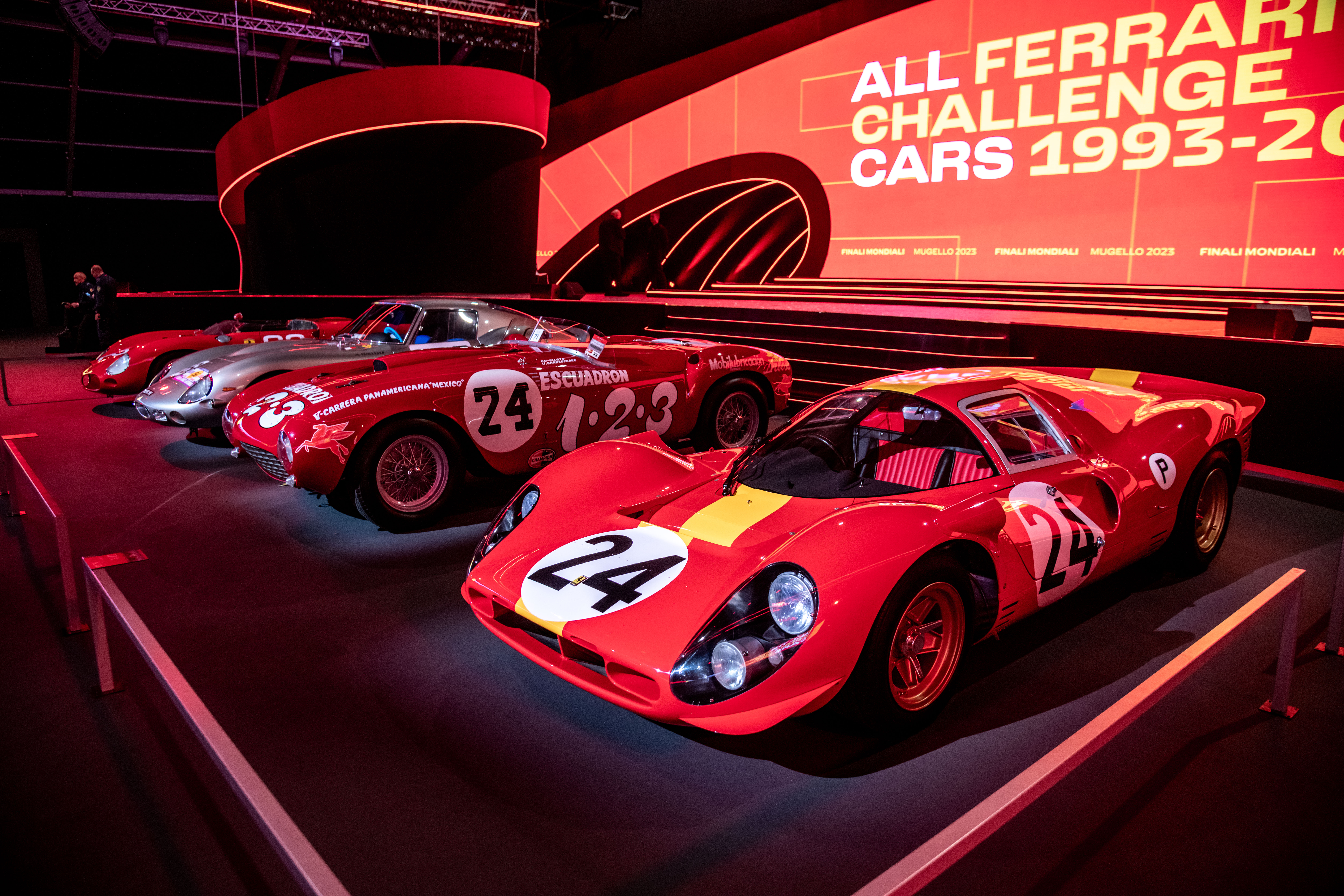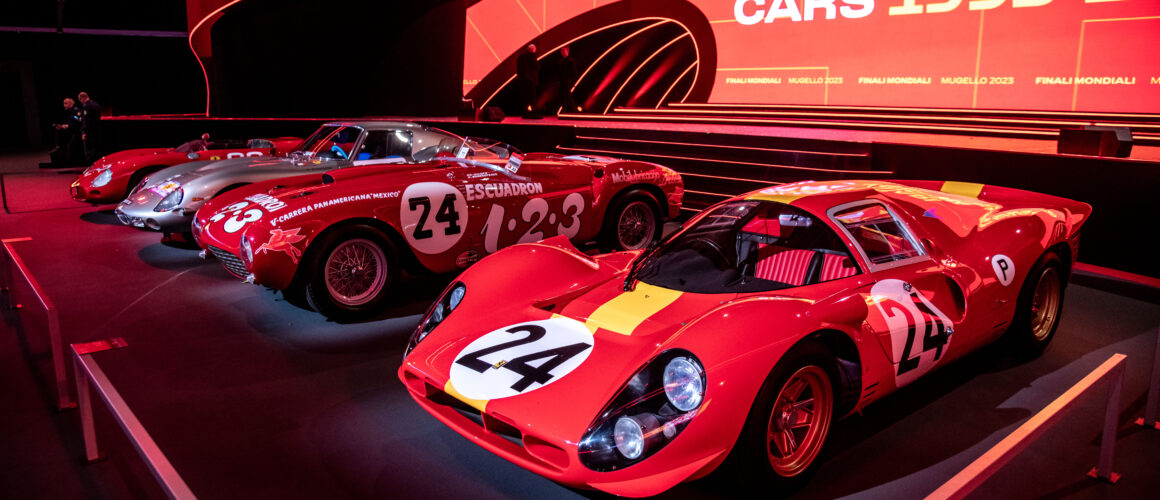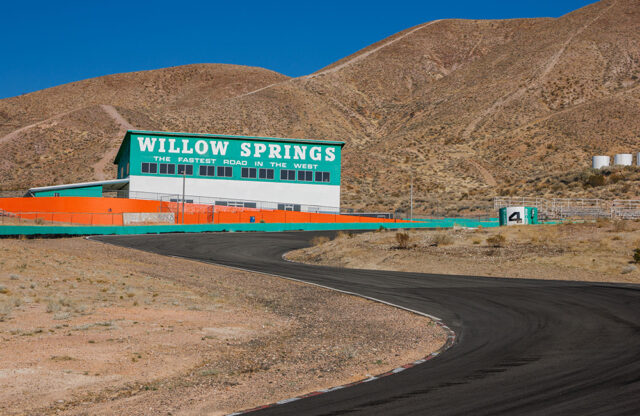WORDS: NATHAN CHADWICK | PHOTOS: FERRARI/AUTHOR
Ferrari’s Finali Mondiali at the Mugello Circuitwas a feast for the Tifosi – not only was it a fine spectacle of Maranello motor sport, but there were new cars to enjoy, plus Formual 1 demonstrations and more. Although the Formula 1 team might not be having its best year, the Le Mans 24 Hours victory for the 499P provided plenty to celebrate.
You can read more about the event here – but one of the major highlights of the weekend was a display of the marque’s proud endurance racing heritage, plus a spot of rallying history, too. Scroll down to see some of the highlights from a magnificent collection of competition Ferraris.
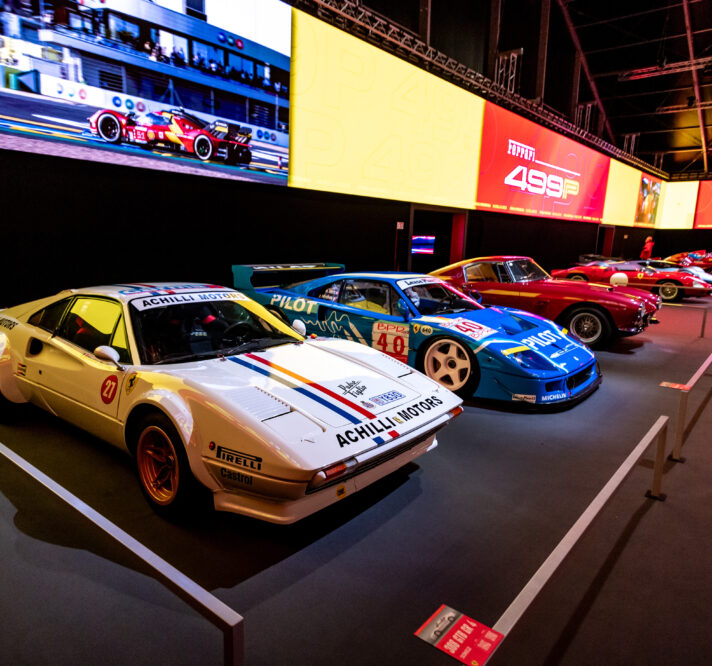
Ferrari's victory at Le Mans in 2023 provided an opportunity to display the marque's proud endurance-racing heritage

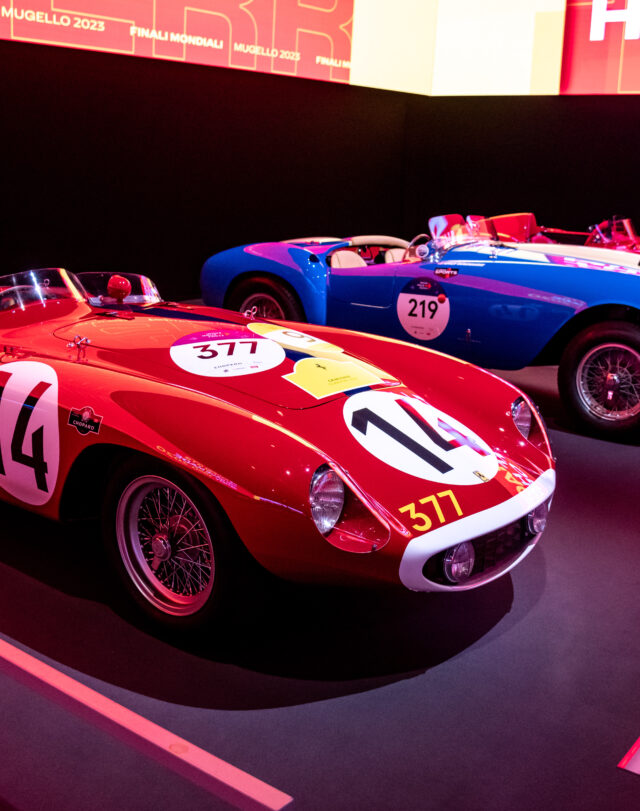
1962 Ferrari 268SP
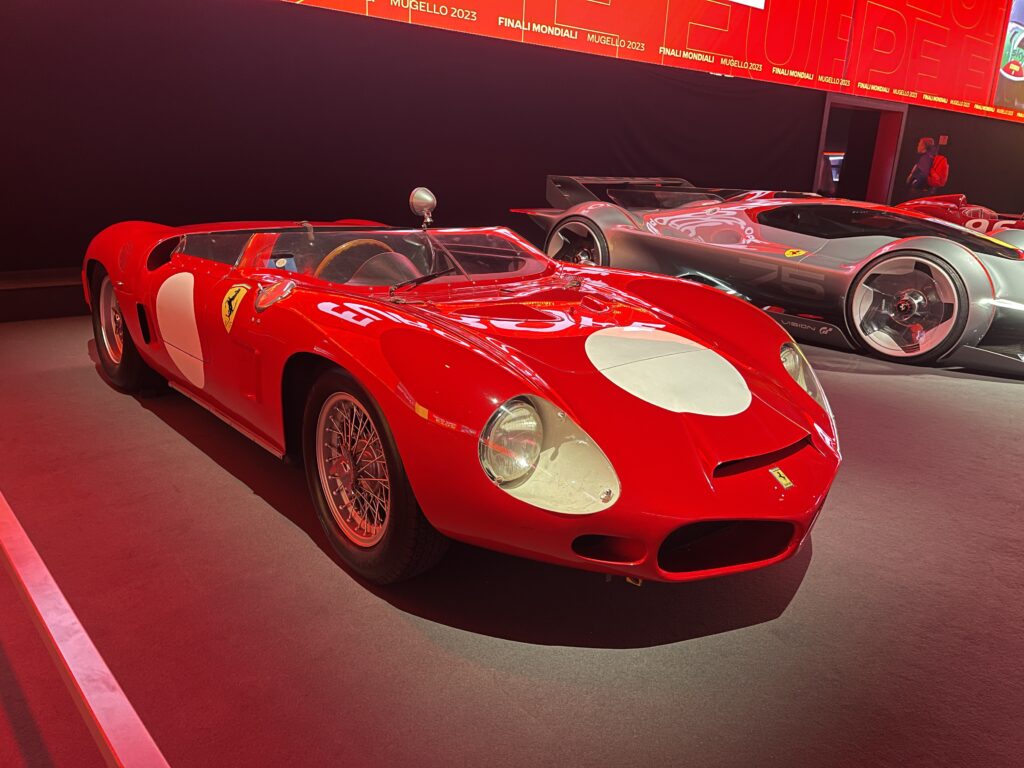
The Ferrari 268P had been in development since 1960, following Cooper and Lotus into experimenting with rear- and mid-rear engine positioning. The first fruits of this labour appeared at a Ferrari press conference in February 1961, boasting Fantuzzi bodywork that aped the Ferrari 156 F1 car. Six SP models were built, four with a 2.4-litre V6 and two with a brand-new V8 engine. This 2.4-litre V8 didn’t quite cut the mustard in competition, so in 1962 the engine was bored out to 2.6 litres to create the 268SP. Of the two Ferrari 268SPs entered into the 1962 Le Mans 24 Hours, Giancarlo Baghetti and Ludovico Scarfiotti got as far as 18 hours before succumbing to clutch failure.
1957 Ferrari 500TRC

The Ferrari 500TRC was part of the Monza line of endurance cars to use four-cylinder engines designed by Aurelio Lampredi. The 500TRC was a modified version of the 500TR that had proven highly successful in 1956. Ferrari itself had moved onto V12-powered cars in the form of the 315S, 355S and 250 Testa Rossa, leaving the TRC to be campaigned by privateers. The addition refers to Annex C, showing that the car was up to date with International Racing Code. Fulfilling these regulations means it had a passenger door fitted, full-width windscreen with wipers, 120-litre fuel tank, convertible top and wider cockpit. The wheelbase was longer, and the suspension was fitted with independent coil springs at each corner. It would be the last four-cylinder car to be produced by Ferrari.
1955 Ferrari 750 Monza
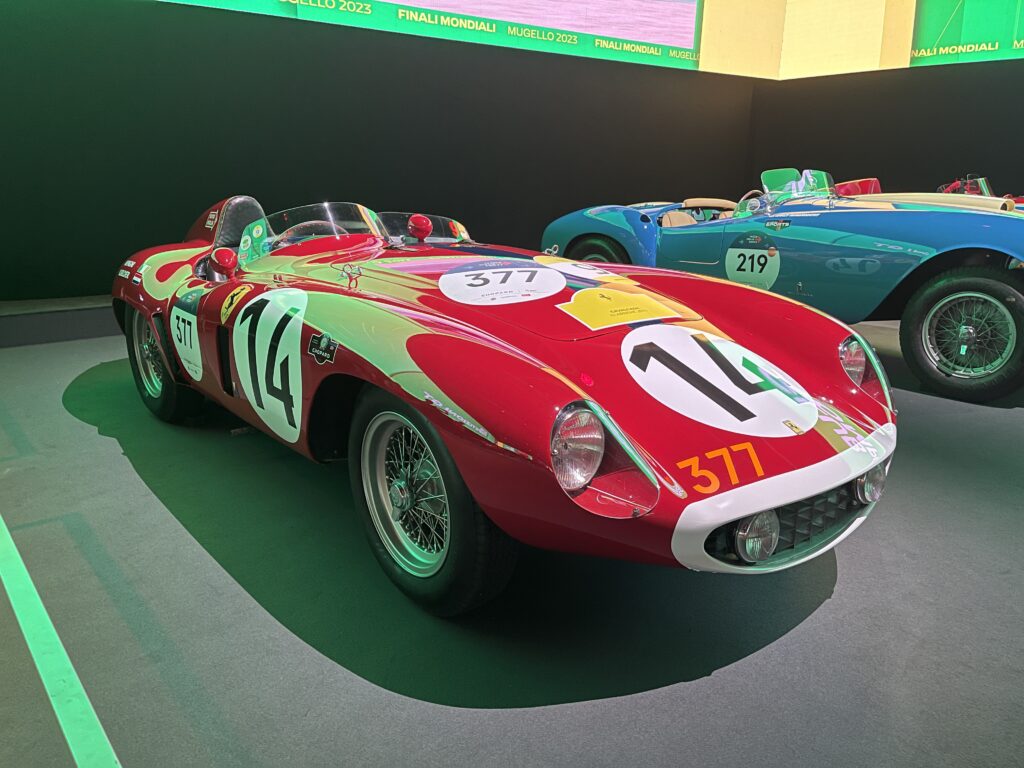
The Ferrari team sported two four-cylinder cars between 1954 and 1955: the 500 Mondial (later replaced by the 500TR) plus this, the 3.0-litre 750MM. It was essentially a larger version of the 500 Mondial’s engine, with around 250bhp on tap in a 760kg package. The Pinin Farina-penned bodywork was constructed by Scaglietti, and the package would prove instantly competitive – Mike Hawthorn and Umberto Maglioli took victory at Monza on its debut, thus christening the car ‘Monza’.
1953 Ferrari 375MM
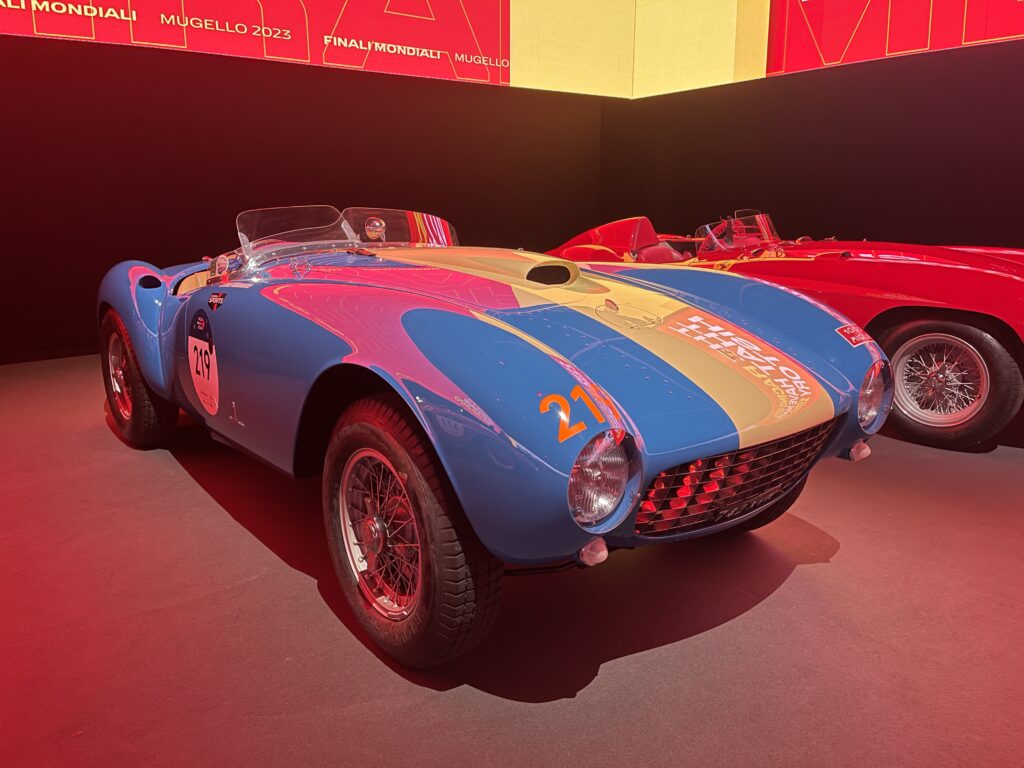
The 375MM was a development of the 340MM, utilising the engine from the 375 F1 car but with a shorter stroke and a bigger bore for customer cars, while the factory teams used a full F1-spec version. The V12 could produce 335bhp in either form. This car’s wheelbase was slightly longer than that of the 340MM, and it retained much of the same suspension set-up aside from Houdaille-style hydraulic dampers all round. The 375MM won at the Spa 24 Hours, Pescara 12 Hours, Casablanca 12 Hours and Nürburgring 1000km. While Le Mans victory eluded the 375MM due to clutch problems, the car did help to bag the 1953 World Sportscar Championship for Ferrari.
1955 Ferrari 735LM
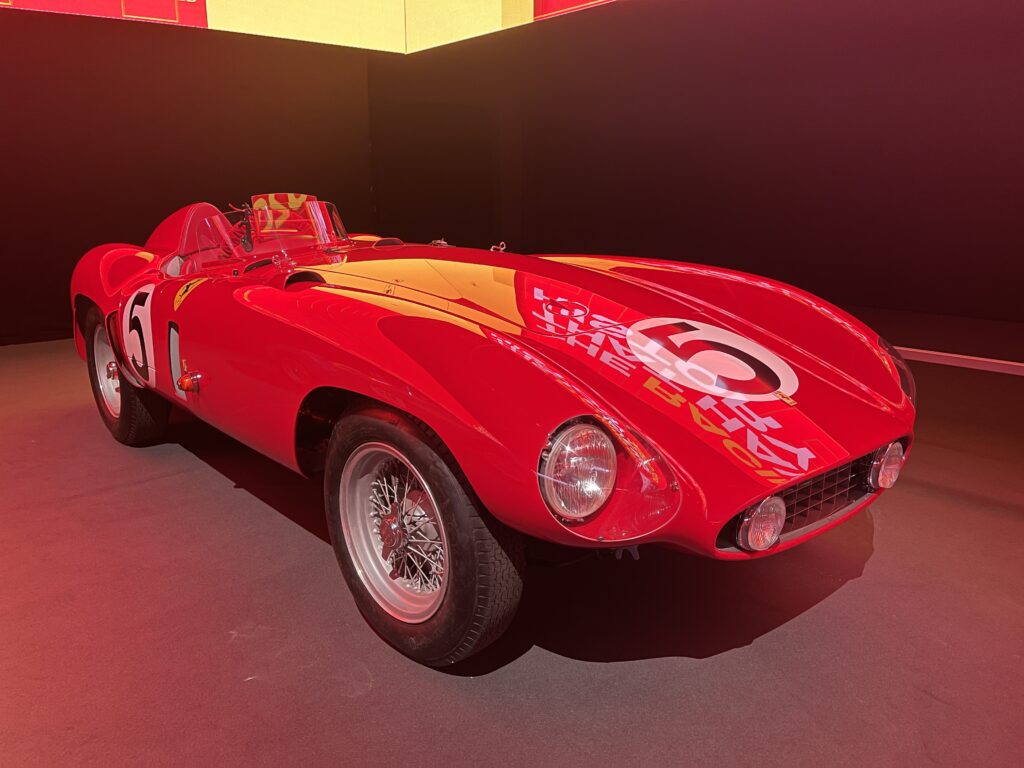
Also known as the 121LM, the 735LM cars were converted from the 376S sports cars in a bid to win the Le Mans 24 Hours. It was powered by a Aurelio Lampredi-designed straight-six measuring 4.4 litres that produced 325bhp. Le Mans would turn out to be a failure because none of the 735LMs entered would make it past the ten-hour mark. However, the 735LM would go on to score victories in SCCA racing in the US, as well as at some European hillclimbs.
Ferrari 166MM
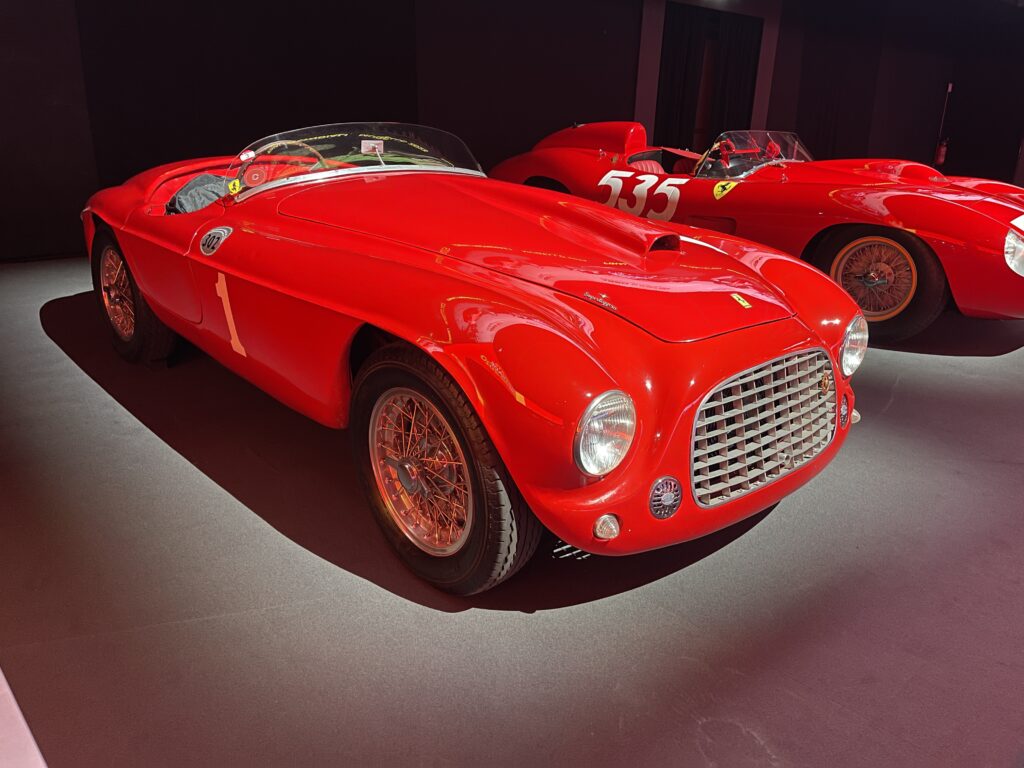
The Ferrari 166MM was developed out of the 166S programme, sharing the same Aurelio Lampredi-designed tubular frame and double-wishbone front suspension and live rear axle set-up. The wheelbase remained the same, although the bodies were crafted by Touring Superleggera. Power came from a 140bhp Colombo V12 measuring 2.0 litres, which was enough to garner a one-two victory on the 1948 and 1949 Mille Miglias, plus outright victory at the Le Mans 24 Hours in 1949 with Luigi Chinetti and Lord Selsdon behind the wheel.
1961 Ferrari 246SP
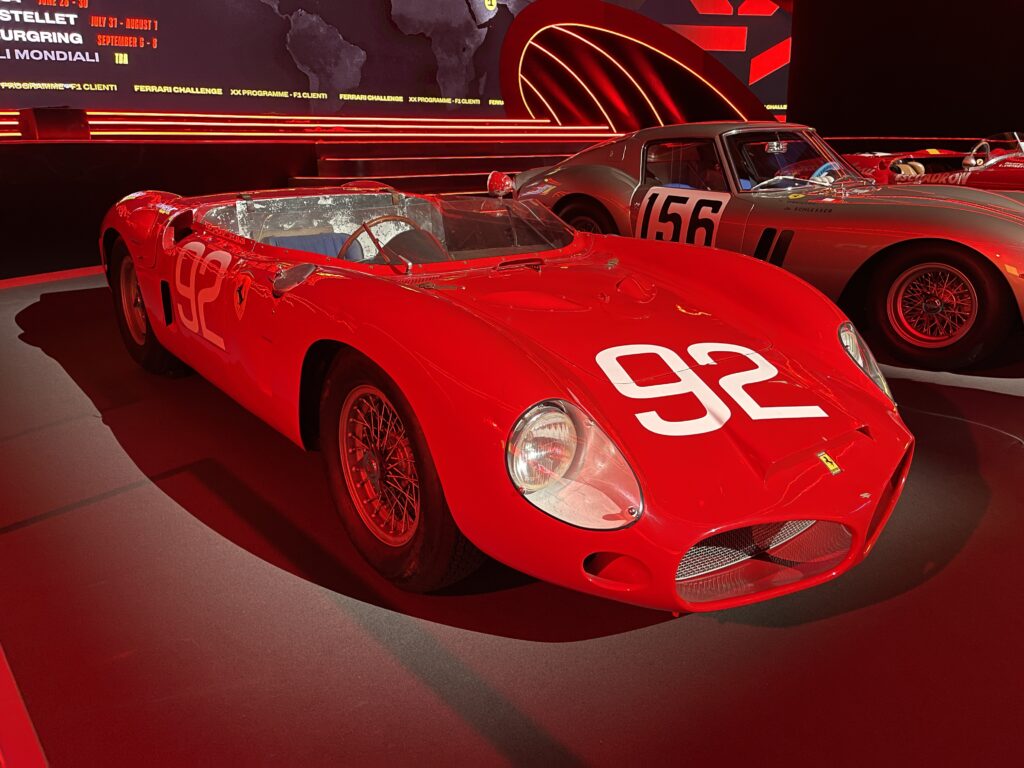
The Ferrari 246SP was the company’s first mid-engined racing car, and used Vittorio Jano’s 2.4-litre Dino V6, clothed in a bodied designed by Medardo Fantuzzi of Carrozzeria Fantuzzi, working alongside Carlo Chiti. The car was part-developed in a wind tunnel, which led to innovations such as low bonnet, high rear bodywork and a vertical tail fin. The fin would later be removed after a testing crash, to be replaced by a tall rear spoiler at the suggestion of Richie Ginther. The cars – of which two were built – were rebodied for the 1962 season; however, they would retain the sharknose front until the 1963 season. Chassis 0790 won the 1961 Targa Florio and the Guards Trophy in 1962, before being converted into 196SP specification. Meanwhile, chassis 0796 won the Targa Florio in 1962, and at the end of the year it became a development mule for the 250P.
1957 Ferrari 315S
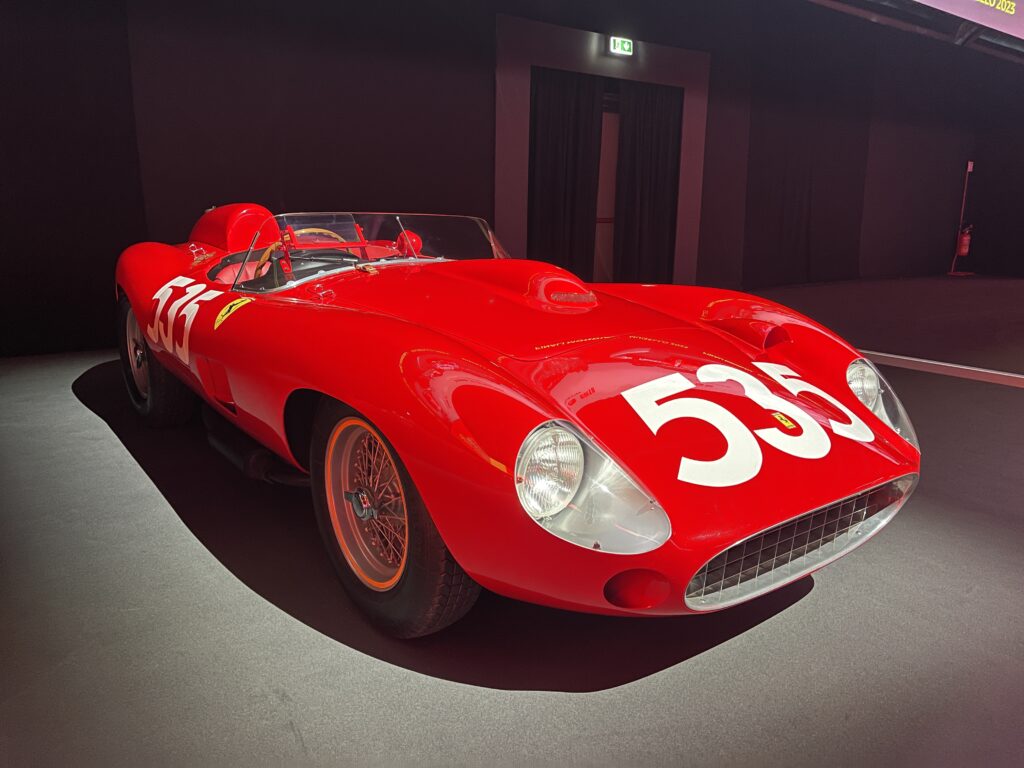
Intended as the replacement for the 390MM, the 315S was introduced in 1957. It was powered by a 3.8-litre Vittoria Jano-designed V12 that produced around 360bhp. While Le Mans would elude the car, it would notch up a one-two finish at that year’s Mille Miglia. It lived a short life due to changes in regulations, and just three were made, including one that was converted from a 290 S.
1959 Ferrari 250GT Berlinetta Passo Corta

The 250GT Berlinetta Passo Corto – or Short Wheelbase – would prove to be a major force in GT racing. The shorter wheelbase compared with its predecessors helped give the car, developed by the dream team of Carlo Chiti, Giotto Bizzarrini and Mauro Forghieri, nimble handling. The powerful Columbo V12 helped, of course, and the car duly took the GT class of the 1961 Constructor’s Championship, and won the Tour de France Automobile three times on the trot.
1962 Ferrari 250GTO
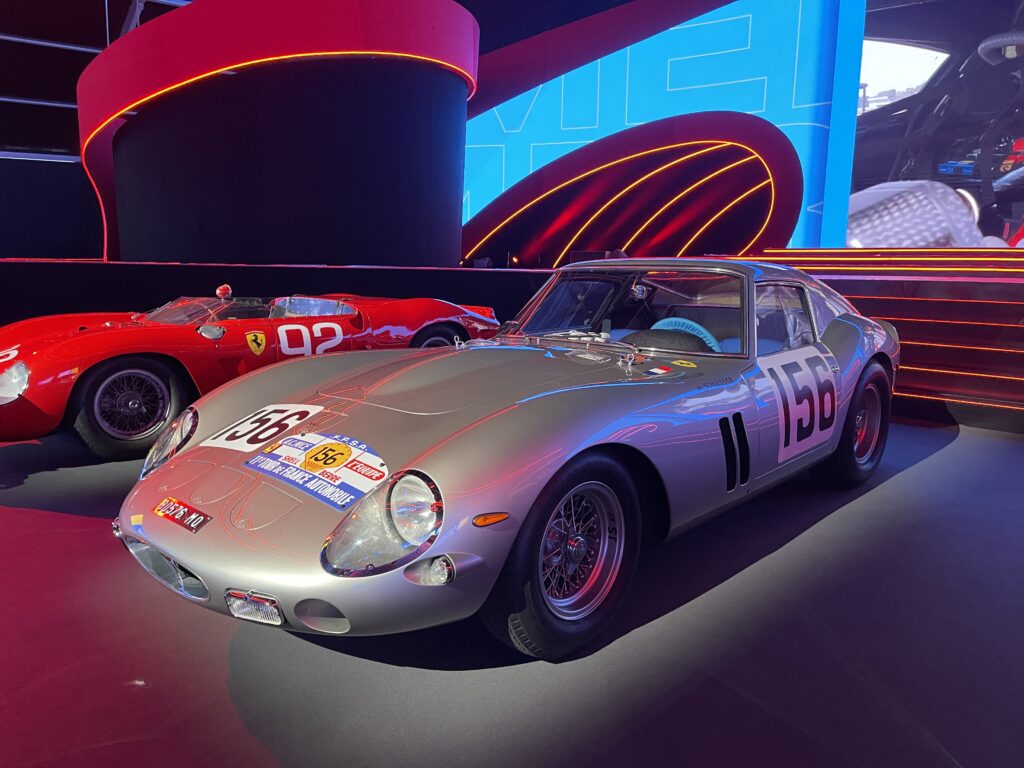
The development of the 250GTO was marked by controversy. The development team, led by chief engineer Giotto Bizzarrini and including Carlo Chiti and sporting director Romolo Tavoni, were mostly fired after the famous ‘Night of the Long Knives’ dispute with Enzo Ferrari. This left the development of the GTO to the young Mauro Forghieri, who was promoted to chief racing engineer. Working with Scaglietti to further develop the body, the car built on the solid mechanical foundations of the successful 250GT Passo Corto. With a 3.0-litre V12 pushing near-300bhp and a well sorted chassis, the car proved to be immensely successful in GT racing between 1962 and 1964.
1953 Ferrari 375MM Spyder PF
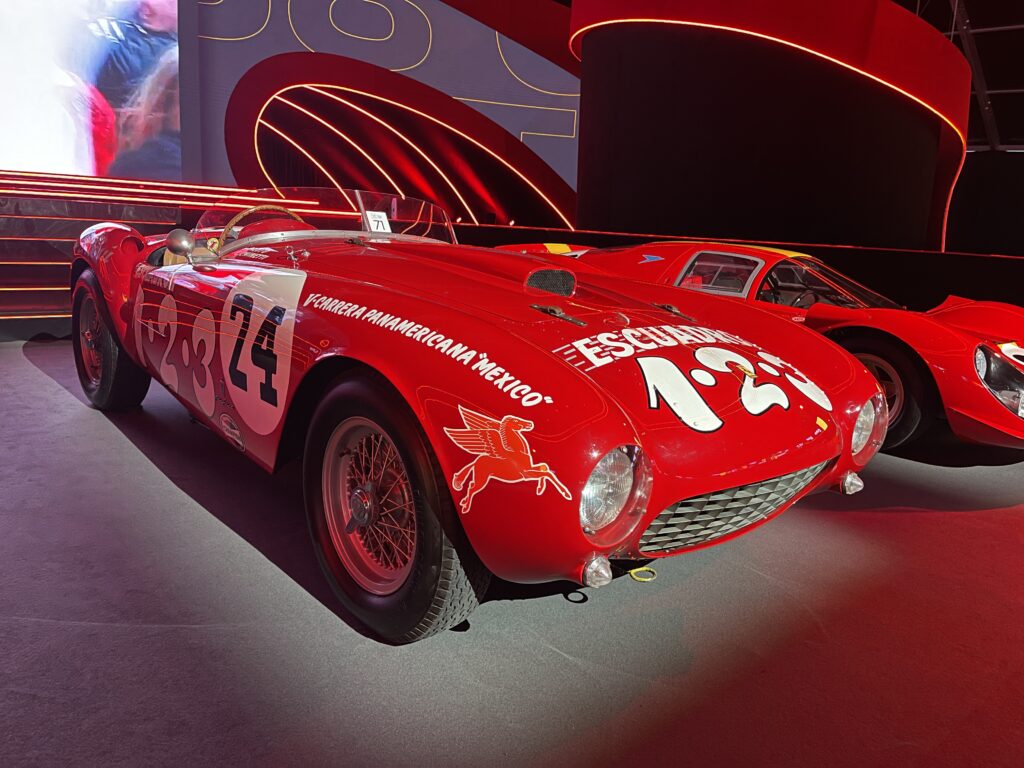
This Ferrari 375MM was first sold to Alfred Erwin Goldschmidt, the son and heir of famous German banker Jakob Goldschmidt, who fled Germany in 1933. Alfred, based in the US, would score first places at the Toronto GP, Giants’ Despair hillclimb and Edenvale events, before the car passed to Luigi Chinetti. He displayed the car at the New York Auto Show, where it was bought off the stand by John W Shakespeare.
Shakespeare and Chinetti would team up for the Carrera Panamericana in November 1954, finishing sixth overall and fourth in class in what would be Chinetti’s final race. Shakespeare continued to compete with the Ferrari (sometimes allowing others behind the wheel) until 1955, when it was passed to John Kliborn of Illinois. He’d compete with the car until 1957, notching up several podiums in SCCA racing; his best result was first overall at the Road America Six Hours in September 1956 alongside Howard Hively. From there it passed through three American owners before entering the long-term ownership of Pierre Bardinon in 1970. He’d keep the car until 1984, when it was sold to Adriene Maeght and displayed at the Musée de l’Automobiliste. In 1994 it moved to Germany under the stewardship of two different owners; since 2018 it’s been in the hands of a private collector.
1967 Ferrari 330 P4
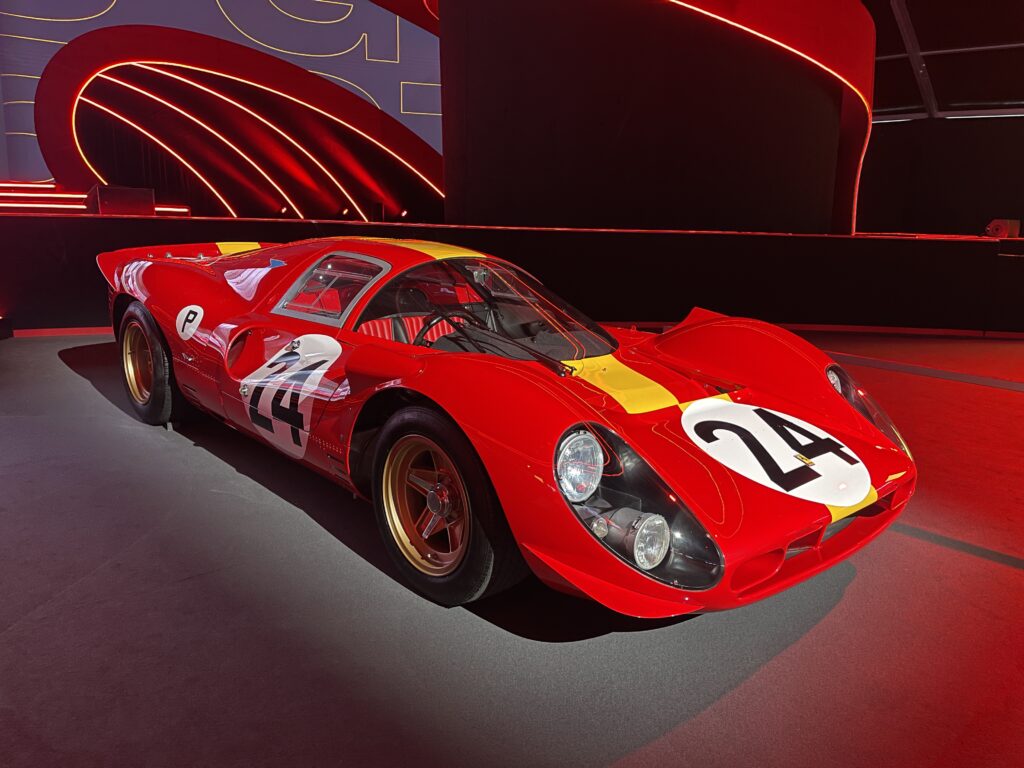
The Ferrari 330 P4 was the final incarnation of the successful mid-engined endurance programmes. The earlier cars had repelled the Ford onslaught, but eventually the Blue Oval wrested control over Le Mans. A huge budget from Ford didn’t stop Ferrari creating the P4 for 1967, even though rule changes at the end of the year would give the car a short life. Although the engine still measured 4.0 litres, the V12 was actually derived from the 3.0-litre F1 engine Ferrari was using. Enhancements included a revised cylinder head, three valves per cylinder and Lucas fuel injection – the result was 450bhp. It made an immediate impact, with two P4s and a P3 filling the podium positions on Ford’s turf, the Daytona 24 Hours. Le Mans victory eluded Ferrari – that went to Ford – but Maranello did get to take home the World Championship trophy.
1982 Ferrari 308GTB Group 4

Padova-based Ferrari dealer and competition car preparer Michelotto first started producing competition rally versions of the 308 in 1978. Ferrari hadn’t originally planned to take it racing, but two years prior to Michelotto’s efforts, Ferrari’s Assistenza Clienti department produced a Group 4 test car that would, in theory, be eligible for Le Mans, and was inspired by the North American Racing Team’s 308 GT4. The Assistenza Clienti car never raced due to Fiat Group politics, but its learnings were taken forward into the Versione Sport package of engine upgrades – and then Michelotto got the gig to handle preparation completely, having impressed with its work with the Lancia Stratos.
The glassfibre body was altered with flared wheelarches to accommodate new five-spoke Campagnolo wheels and fatter rubber, while some of the body was crafted from slimmer glassfibre and Kevlar. The engine was treated to mechanical fuel injection and 10.5:1 high-compression pistons, plus lighter aluminium cylinder heads and crankcase, and a dry-sump lubrication system. It would produce 315bhp, and 11 cars were built between 1978 and 1983 with new and used examples forming the basis of the conversions.
1989 Ferrari F40 LM Competizione
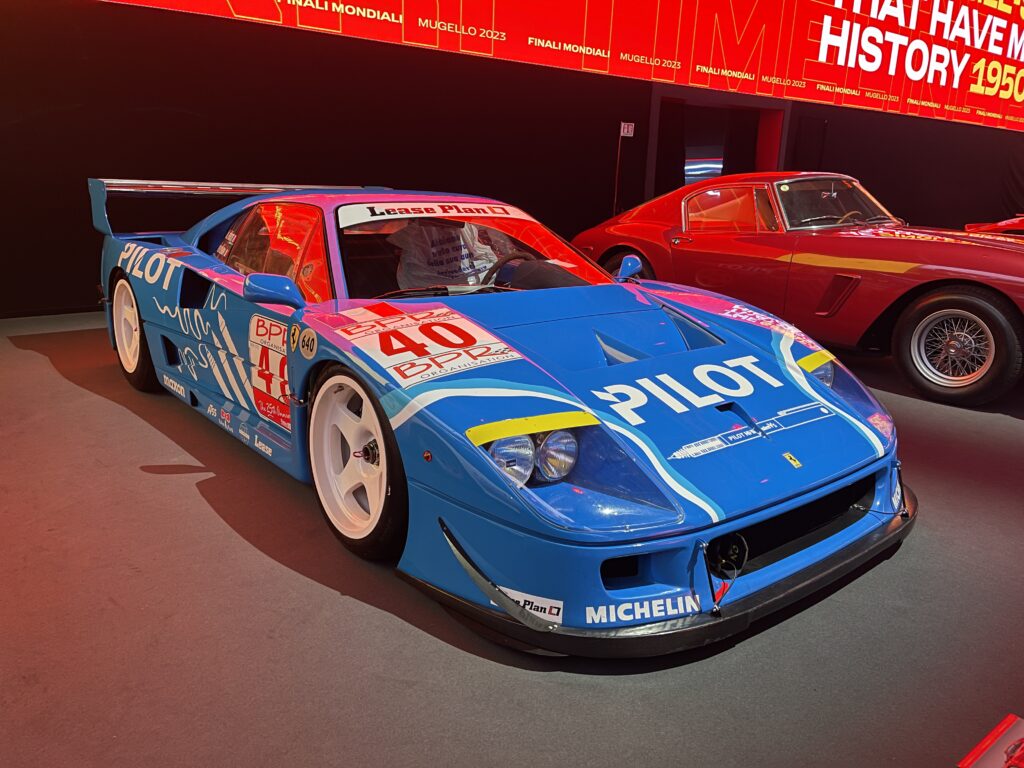
The Ferrari F40’s racing career nearly didn’t happen – French importer Charles Pozzi was behind the project, and co-opted Michelotto to develop an endurance-racing version. This entailed two larger IHI turbocharger/intercooler units and a highly developed Weber-Marelli fuel-injection system that yielded 700bhp in a 1050kg package. This particular car was a pre-production prototype that was sold to a former Le Mans and IMSA driver in 1992, and then sent to Michelotto to be transformed into LM specification.
The car was sold to Charles Zuger, and then it passed to GT racing organiser Stéphane Ratel who raced it in the European GT Championship in 1995, but it was soon sold again, to the French Pilot-Aldix team, for use in the BPR Global GT Series, with Michel Ferté and Olivier Thévenin behind the wheel. After four retirements the car proved to be the fastest GT1 runner at Le Mans pre-qualifying in 1995, and fifth overall. This translated into seventh on the grid for the race proper, with Carlos Palau joining the team. The car finished 12th overall and sixth in GT1, the highest result for an F40 at Le Mans. Two weeks later Ferté and Thévenin won from pole at the Anderstorp Four Hours, and the car also finished second at Silverstone that year. For 1996 the car was upgraded to GTE specification with a new rear wing, with third place at Nogaro a rare highlight for the team. It would contest Le Mans again, but would not finish the race.
2022 Ferrari Vision Gran Turismo
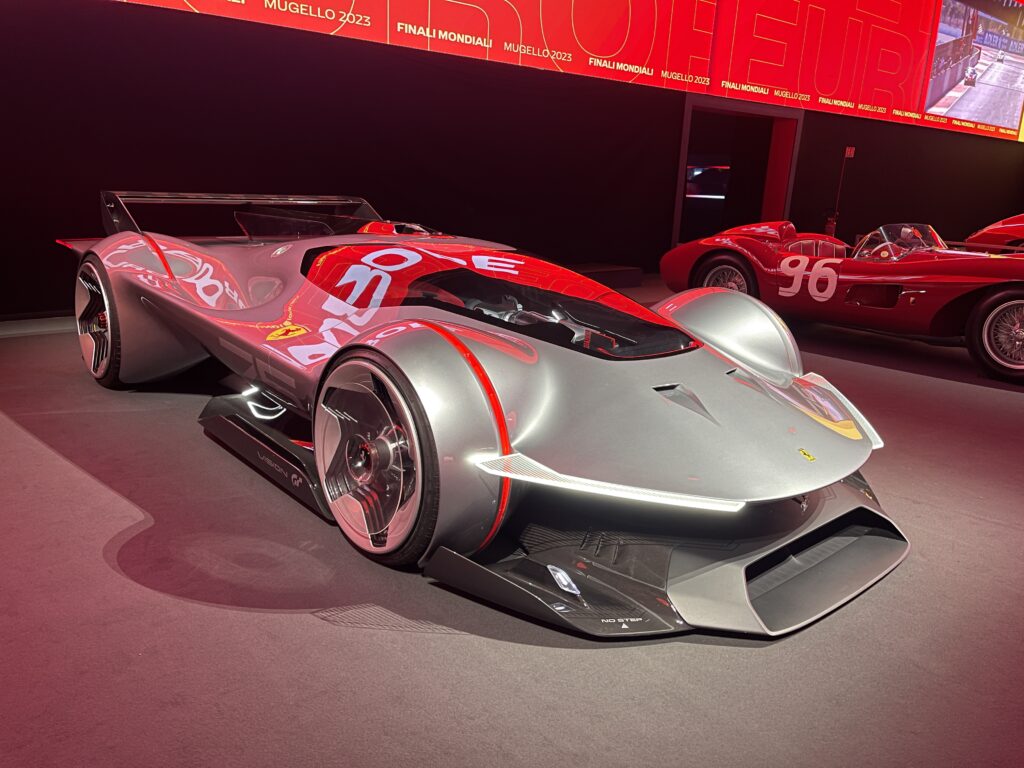
The first Ferrari concept car built specifically for the Gran Turismo video game series was unveiled last year as part of the company’s 75th birthday celebrations. Based around a single-seater layout, it was designed by Ferrari Centro Stile under the direction of Flavio Manzoni with inspiration drawn from 1960s and 1970s prototype racing cars. It’s powered by the same 120-degree 3.0-litre turbocharged V6 found in the 296 and 499P, but without any motor sport series regulations to contend with, it produces 1030bhp from ICE power alone, with a further 326bhp available from three electric motors (one on the rear axle and two up front).
2023 Ferrari 499P
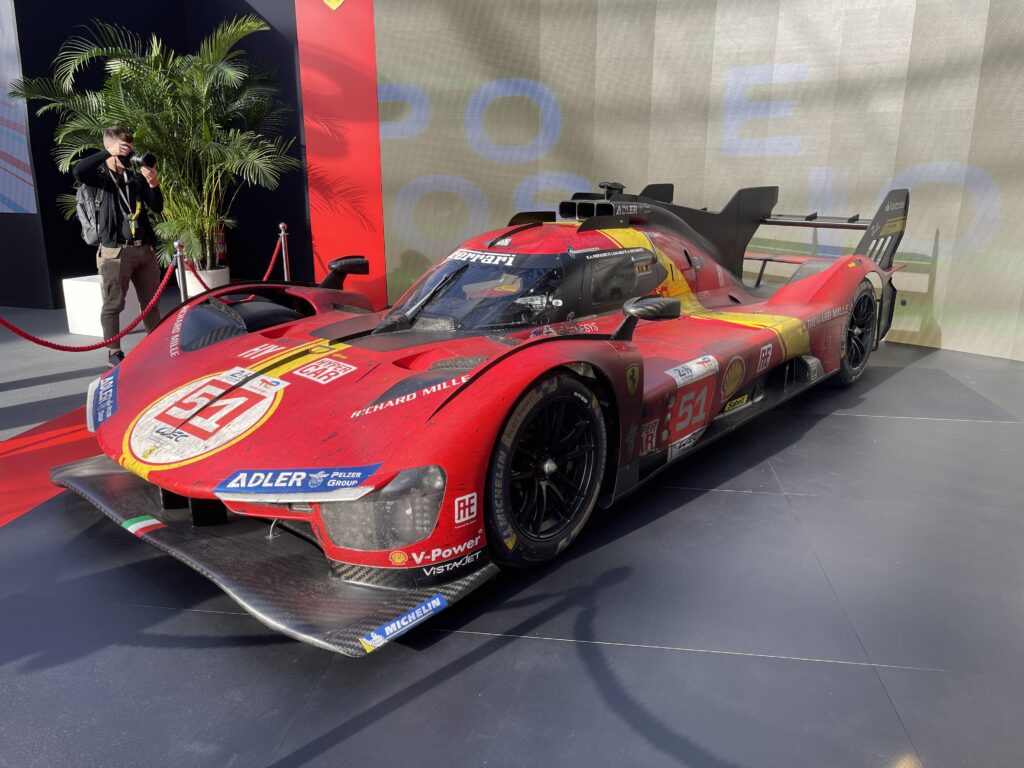
Here’s the very car that took James Calado, Antonio Giovinazzi and Alessandro Pier Guidi to victory by just one minute and 21 seconds in this year’s Le Mans 24 Hours. In a tightly contested race marking 100 years since the first running of the event, the trio bagged the victory – Ferrari’s tenth – on the marque’s first official return to the top class at Le Mans for 50 years.
It’s powered by the same twin-turbocharged V6 engine as the 296 but, unlike with that road car, this is a fully stressed member of the chassis. It has an electric motor on the front axle that produces 268bhp above 118mph (due to regulations) with a 900v battery pack that can be recharged by the Energy Recovery System. The ICE engine produces 680bhp, and the entire car weighs just 1030kg. A non-competitive, unrestricted track-only version for Ferrari clients was announced at Finali Mondiali – you can read more about it here.
